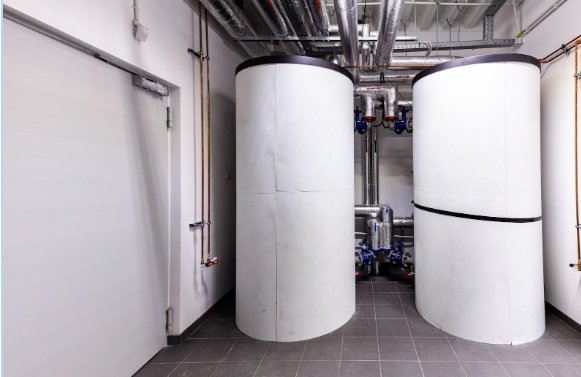
For decades, durable hot water systems have been a quiet but essential part of every home. Whether it is for a morning shower, washing the dishes, or doing the laundry, we rely on these systems every single day. While the basic need has stayed the same, the technology behind hot water delivery has evolved dramatically. From improved efficiency to smarter control, modern innovations are reshaping the way Australians heat and use water.
Older hot water systems often relied on electric storage tanks or basic gas burners. While they did the job, they were not always the most efficient. Heat was often lost through poorly insulated tanks, and energy use was higher than necessary. Modern systems are designed with efficiency at the forefront.
Today’s storage tanks come with advanced insulation that reduces heat loss, meaning the water inside stays hot for longer without the system constantly running. Instant or continuous flow systems, which heat water only as it is needed, eliminate standby energy loss altogether. Many households are also exploring solar and hybrid solutions that use renewable energy to cut costs and reduce environmental impact.
This shift is not just good for the planet. For families, it can mean significant savings on energy bills over time, making newer systems an attractive upgrade.
Another major change in hot water systems is the introduction of smart technology. Many of the latest models come with digital controls, Wi-Fi connectivity, and mobile app integration. This means you can monitor and adjust your hot water usage directly from your phone.
Imagine being able to schedule heating cycles to match your family’s routine, or checking how much energy your system has used this week. Some smart systems even allow you to remotely boost the water temperature before you arrive home, ensuring hot water is ready when you need it most.
For households with variable energy pricing, smart scheduling can be a powerful tool. Running your system during off-peak hours helps reduce costs and takes pressure off the grid during high-demand periods.
Sustainability is a driving force behind modern innovation. Solar hot water systems have been available for many years, but the technology has improved significantly. Panels are now more efficient, storage tanks are better insulated, and backup systems are seamlessly integrated to provide hot water even on cloudy days.
Hybrid systems that combine solar with electric or gas backup ensure that families never run out of hot water, regardless of the weather. For households looking to future-proof their energy use, solar and hybrid systems are becoming increasingly popular.
In addition, heat pump systems are gaining traction as an environmentally friendly option. These units draw heat from the air and transfer it into the water, much like a reverse-cycle air conditioner. They require far less electricity than traditional electric systems, making them a smart choice for eco-conscious homeowners.
Modern hot water systems are also safer and more reliable than their older counterparts. Features such as built-in thermostats, anti-scald devices, and pressure relief valves are now standard in most models. These advancements reduce the risk of accidents while providing peace of mind for families.
Systems are also built with longevity in mind. Corrosion-resistant materials, advanced coatings, and self-cleaning features help extend the life of storage tanks and reduce maintenance needs. While no system lasts forever, the improvements in design mean homeowners can expect better performance for longer.
Another way modern technology has changed the hot water game is in capacity management. In the past, families often had to guess the right tank size to avoid running out of hot water. Too small, and someone missed out on a hot shower. Too large, and energy was wasted heating water that was never used.
Now, systems are better at matching capacity to real-world needs. Continuous flow systems supply hot water on demand, making them perfect for large families or households with fluctuating usage patterns. Digital controls also provide real-time feedback, so you know if your household is using more water than expected and can adjust accordingly.
The evolution of hot water systems shows no sign of slowing down. Future innovations are likely to focus on even greater efficiency, renewable integration, and smarter controls. With energy prices rising and sustainability a top priority, the demand for intelligent, eco-friendly solutions will only grow.
For homeowners, keeping up with these changes can mean lower bills, reduced environmental impact, and a more convenient lifestyle. Upgrading an old system might feel like a big investment, but the long-term benefits are hard to ignore.
Modern technology is transforming hot water systems from simple household appliances into sophisticated, energy-smart solutions. Whether it is through solar power, heat pumps, continuous flow designs, or Wi-Fi connectivity, the way we heat water is becoming more efficient, safer, and better suited to today’s lifestyles.
As technology continues to advance, one thing remains constant: the need for reliable hot water in our homes. By embracing the latest innovations, homeowners can enjoy comfort, convenience, and savings while doing their part for a more sustainable future.
How Modern Tech Is Changing the Way We Heat Water
October 6, 2025The Most Common Jobs Electricians Get Called For
October 6, 2025Luxury Living Spaces: The Ultimate Guide to Creating a Home That Reflects Your Lifestyle
October 3, 2025Unlock a Brighter Future: Why Solar Power is a Smart Investment
September 29, 2025Unlocking the Best Real Estate Investment Opportunities
September 26, 2025